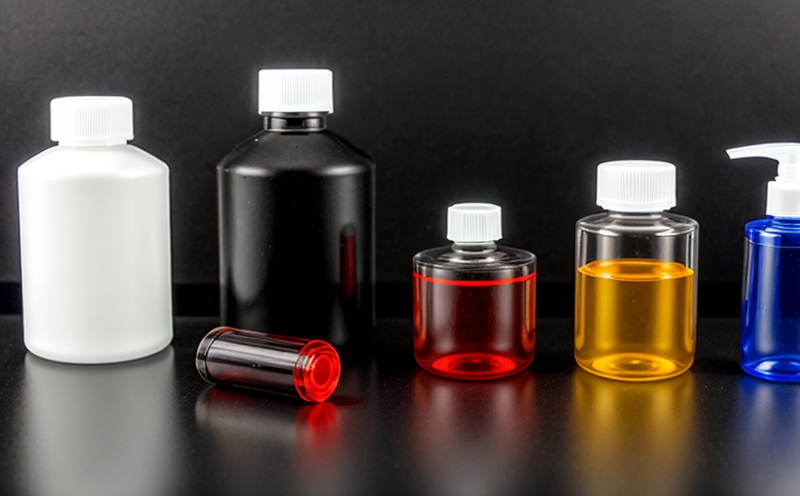ISO 179 Impact Resistance of Polymers Containing Nano Additives
The ISO 179 impact resistance test is a fundamental standard used to evaluate the toughness and durability of polymers, particularly in applications where materials are subjected to sudden impacts. When nanomaterials such as carbon nanotubes or graphene nanoparticles are incorporated into plastics and polymers, their unique properties can significantly enhance mechanical performance, including impact resistance.
Testing these nanocomposites using ISO 179 provides insight into how the addition of nano additives affects the overall toughness of the material. This is critical for industries like automotive, aerospace, and consumer electronics, where the ability to withstand high-impact scenarios can be a deciding factor in product performance and safety.
The test involves subjecting specimens cut from the polymer containing nano additives to an impact force applied at controlled parameters such as speed, energy, and angle. The degree of fracture or deformation is then assessed, providing quantitative data on how well the material withstands impacts.
Understanding the impact resistance properties of these materials helps manufacturers optimize their formulations. By knowing precisely how much impact a polymer can endure before failure, they can make informed decisions about product design and application suitability. This test plays a crucial role in ensuring that products meet regulatory requirements for safety and performance, thereby reducing risks associated with potential failures.
Moreover, ISO 179 testing is not just about compliance; it's also an essential tool for R&D teams to innovate. By exploring the limits of impact resistance through this test, researchers can identify new ways to improve material properties without compromising other desirable characteristics like flexibility or thermal stability.
The precision and repeatability of ISO 179 testing make it a cornerstone in quality assurance programs across various sectors. It ensures that each batch of polymer-nano additive compounds meets specified standards, enhancing reliability and trustworthiness for end-users.
- Customer Impact: Enhanced durability leading to longer product lifecycles and improved safety.
- Satisfaction: Consistent performance across batches, reducing warranty claims and recalls.
- Competitive Edge: Superior impact resistance can differentiate products in the market.
Why It Matters
The importance of ISO 179 testing in polymers containing nano additives cannot be overstated, especially given the growing demand for lightweight and strong materials across industries. The inclusion of nanomaterials in plastics and polymers offers significant advantages, including increased strength, reduced weight, and enhanced thermal stability.
However, these benefits come with a challenge: accurately assessing their impact resistance is crucial to ensure that they perform as expected under real-world conditions. ISO 179 provides the necessary framework for this evaluation by standardizing the methodology used in testing.
The test is particularly relevant in applications where materials are likely to encounter sudden impacts, such as automotive components subjected to road debris or sports equipment exposed to high-velocity collisions. In these scenarios, knowing how much impact a material can withstand before failure is essential for both safety and performance.
Furthermore, ISO 179 testing helps manufacturers comply with international standards and regulations, ensuring that their products meet safety and quality benchmarks across different markets. This compliance not only protects the reputation of companies but also builds consumer trust, which is vital in competitive industries.
The results from this test are used by various stakeholders including R&D engineers, quality managers, and procurement teams to make informed decisions about material selection, product design, and manufacturing processes. By leveraging ISO 179 testing, these professionals can optimize their operations, ensuring that they deliver high-quality products that meet or exceed customer expectations.
Quality and Reliability Assurance
Incorporating nanomaterials into plastics and polymers through ISO 179 impact resistance testing is part of a comprehensive quality assurance strategy. This approach ensures that the materials used in critical applications are reliable and perform consistently across different batches.
The standardization provided by ISO 179 allows for precise measurement and comparison of mechanical properties, which is essential for identifying any inconsistencies or variations in material performance. For manufacturers, this means having a clear understanding of how each batch of polymer-nano additive compounds behaves under impact conditions.
By conducting rigorous testing according to ISO 179 guidelines, companies can identify potential issues early in the production process. This proactive approach not only enhances product quality but also reduces the risk of costly errors later on. Additionally, it allows for continuous improvement by providing valuable feedback that can guide future development efforts.
Furthermore, adhering to international standards like ISO 179 demonstrates a commitment to excellence and builds confidence among customers. In today's global market, where regulations vary from region to region, having consistent testing methods ensures compliance with local requirements while maintaining high-quality standards worldwide.
Customer Impact and Satisfaction
- Better Safety: Products made using ISO 179 tested polymer-nano additives are safer, reducing the risk of accidents or injuries.
- Prolonged Lifespan: Enhanced durability leads to longer-lasting products, increasing customer satisfaction and loyalty.
- Improved Performance: Superior impact resistance ensures that materials perform optimally under various conditions, enhancing overall user experience.
- Reduced Warranty Claims: Consistent performance across batches reduces the likelihood of product failures, minimizing warranty claims and associated costs.
- Innovation: ISO 179 testing encourages continuous improvement in material properties, driving innovation in product design and development.
- Competitive Advantage: Superior impact resistance can differentiate products in the market, giving manufacturers a competitive edge.





